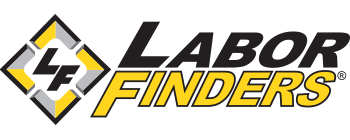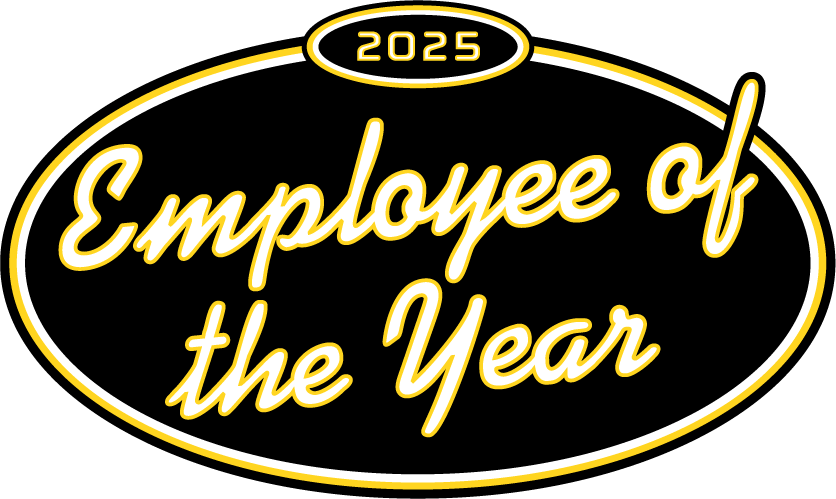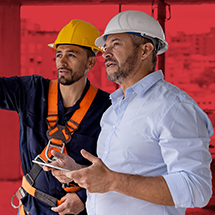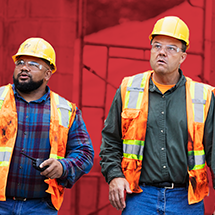-
Job Seekers
X
Job Seekers
Whether you're looking for a temp job or a permanent career, Labor Finders has you covered!
-
Explore
- How it works
- Industries
- Blog
- Locations
- Job Search
You May Also Be Interested In

2025 Employee of the Year
Learn more about our amazing Employee of the Year
-
-
Employers
X
Employers
Let us help you find the workers you need, when you need them.
You May Also Be Interested In
-
Industries
X
Employer Industries
Ready to staff your next project? Our staffing experts has the knowledge and the workers to cater to your unique staffing needs.
In this Section:
Job Seeker Industries
From construction to waste management, we have job openings in whatever industry you’re interested in.
In this Section:
-
About
X
About You
Getting matched to the right job, gaining the flexibility you want, making an impact in your community - at Labor Finders, it’s all about you!
-
You may also be interested in
- About Us
- Job Search Results
- Find an Office
- How it works
- Blog
About Us
With almost 200 offices nationwide, we’ve been putting people back to work for over 40 years. See why we’re a leader in the blue-collar staffing industry.
-
You may also be interested in
- About Us
- Media Center
- Video Library
- Leadership Team
- Careers
- In The Community
- History
-
- Location
Safety
A National Safety Month Q&A with David Zolnowski

In honor of June being National Safety Month, we sat down with Labor Finders’ Director of Safety, David Zolnowski, based out of our Branch Support Center in Palm Beach Gardens, FL. Although safety is part of everybody’s job at Labor Finders, David’s role, as well as his experience and expertise honed over two decades, gives him a unique perspective on what “safety” really means for the country's oldest and largest privately held industrial staffing company.
What are the high-level responsibilities of a Risk Director?
The responsibilities of a Risk Director can vary based on the organization's size and industry. However, at a high level, this role typically involves several key duties. First, the Risk Director is responsible for developing and implementing proactive policies and procedures to reduce risk and prevent incidents. They also handle insurance policy maintenance and renewal to minimize premiums. Additionally, they manage claims with third-party administrators (TPAs), adjusters, and defense counsel to ensure the best possible outcomes. Furthermore, the Risk Director ensures regulatory compliance with agencies such as the Occupational Safety and Health Administration (OSHA), Department of Labor (DOL), and Environmental Protection Agency (EPA). Effective communication is also crucial in this role, as it involves interacting with upper, regional, and branch management at all levels, as well as our temporary associates.
What are the primary safety risks Labor Finders faces, and how do you prioritize them?
Next to payroll, Workers' Compensation (WC) is the second-highest controllable exposure an organization faces. From the perspective of a temporary staffing agency such as Labor Finders, specific training and client job-site evaluations are pivotal because the client has direct and daily control over the associates and job-site conditions. We place our associates in roles and on work sites that we have assessed to emphasize risk mitigation and with clients who share our core value of workplace safety.
Can you share a recent example of a safety risk that was successfully mitigated?
One example that comes to mind of a safety risk that we successfully mitigated involves road flagging, which can otherwise pose an enhanced risk that can result in incidents related to traffic control. In order to maximize the safety of our workers, we reviewed and enhanced our certification materials by adopting the most comprehensive state requirements across the country to offer top-tier consistency. Because of this emphasis on maximizing the effectiveness of our up-front training, we are seeing continuous improvement at the job site.
What role does employee training play in your risk-management strategy?
Training can play a crucial role in equipping employees with the knowledge and skills necessary to identify and address potential risks. This can be the formal and informal training that we share with our internal staff, helping equip everyone to have a safety mindset. Or, it can play out in specific on-the-job training for many of our temporary associate roles, such as the road flagging example I mentioned previously.
How do you ensure compliance with local, state, and federal safety regulations?
To ensure compliance with local, state, and federal safety regulations, we have developed and implemented a four-step process.
-
Identify relevant regulations and risks.
-
Conduct thorough internal audits.
-
Design a comprehensive compliance plan.
-
Provide our employees with detailed regulatory compliance training.
This isn’t a “one-and-done” effort: my department is constantly looking at all four of these steps and identifying opportunities to make incremental improvements.
What technologies or tools do you use to manage and monitor safety risks?
To manage and monitor safety risks, we utilize various technologies and tools, such as insurance-agency systems, third-party administrator (TPA) platforms, and insurance-carrier risk-management information systems (RMIS). These tools help us analyze and identify trends where corrective action can be applied, ensuring comprehensive oversight and proactive risk mitigation.
How do you foster a culture of safety within Labor Finders?
Since launching nearly five decades ago — next year is our 50th anniversary — we have proudly fostered a culture of safety within Labor Finders by leading by example, starting at the top and extending down to the branch-office level. This commitment to safety is further reinforced by incorporating safety-related key performance indicators (KPIs) into our compensation plans.
As our organization has worked through strategic planning processes over the years, “Safety” has consistently remained one of our core values. Recently, we reiterated with all of our employees what Safety means to us: “We take every reasonable precaution to keep our employees safe.” Everyone in our organization, regardless of whether they’re an accountant, a programmer, a marketing professional, or a branch employee who interacts directly with our clients and associates, takes this core value very seriously.
In fact, every department plays a role – our Procurement team is responsible for helping ensure our branches have access to any required personal protective equipment (PPE) for the roles in which we are placing associates. Our Marketing team frequently incorporates safety messaging into both internal and external communications, and also leads safety-themed contests and employee giveaways to promote a safety mindset. Culture is beyond just a value – it is behavior, a value brought to life. And Labor Finders walks the talk!
As our organization has worked through strategic planning processes over the years, “Safety” has consistently remained one of our core values. Recently, we reiterated with all of our employees what Safety means to us: “We take every reasonable precaution to keep our employees safe.” Everyone in our organization, regardless of whether they’re an accountant, a programmer, a marketing professional, or a branch employee who interacts directly with our clients and associates, takes this core value very seriously.
What are the key components of your emergency-response plan?
The key components of our emergency-response plan include identifying potential emergencies such as fires, natural disasters, and active-shooter situations. We designate an emergency-response team with specific roles and responsibilities, and then provide thorough training for team members. Additionally, we establish clear communication protocols, including phone calls, text messages, and emails, and develop detailed evacuation plans or shelter-in-place procedures.
How do you evaluate and improve your safety protocols over time?
To evaluate and improve our safety protocols over time, we closely analyze loss data to identify emerging trends, risk-prone job tasks, clients, and ineffective practices. Based on these insights, we develop and implement policies and procedures designed to reduce and abate risk.
What advice would you give other organizations looking to enhance their safety programs?
For organizations looking to enhance their safety programs, my advice is to first start by assessing your organization’s current safety policies, procedures, and practices. Identify areas for improvement and prioritize actions, based on risk levels and potential impact. The data should tell you exactly where to look for areas where improvement is needed. Also, and equally as important, the data can also help you identify strong positives, which you can then try to apply or replicate in other parts of the business. When you ensure that safety is prioritized at all levels of your organization, you can create a culture of vigilance, minimize workplace accidents, and foster a sense of trust and well-being among employees. It is both ethically right and beneficial for business. When we excel in this area, everyone wins.













